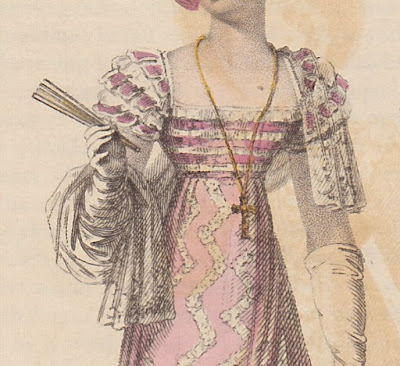 Last week I mentioned that I
had intended to write a post for my 1810 series about the celebrations in
observance of George III’s fifty years on the throne. It was kind of a big deal—only
three other monarchs since the Norman Conquest (Henry III, Edward III, and
James I—and James only squeaks in because of his years on the throne of
Scotland as James VI before he became James I of England) had been fifty years
on the throne. I blithely assumed that the king’s jubilee took place in 1810—specifically,
on October 25, which was the 50th anniversary of the day he became
king on his grandfather George II’s death in 1760. But all my poking around
into the events of 1810 made no mention of a jubilee celebration in 1810.
Weird, I thought. Maybe it wasn’t celebrated because of the war, or...or
something.
Last week I mentioned that I
had intended to write a post for my 1810 series about the celebrations in
observance of George III’s fifty years on the throne. It was kind of a big deal—only
three other monarchs since the Norman Conquest (Henry III, Edward III, and
James I—and James only squeaks in because of his years on the throne of
Scotland as James VI before he became James I of England) had been fifty years
on the throne. I blithely assumed that the king’s jubilee took place in 1810—specifically,
on October 25, which was the 50th anniversary of the day he became
king on his grandfather George II’s death in 1760. But all my poking around
into the events of 1810 made no mention of a jubilee celebration in 1810.
Weird, I thought. Maybe it wasn’t celebrated because of the war, or...or
something.And so I continue to think...until last week's research into a darling Jubilee cloak print from La Belle Assemblee made me dig deeper and discover the real reason why there were no jubilee celebrations in 1810... Because they'd all happened in 1809!
I was able to find a
fair bit
of information about the jubilee observances themselves, but no
explanation for
why they were held at the start of the 50th year of his reign and not on
the anniversary of his assession. The closest I've gotten to an
explanation is that it was generally known that the king's health was
not good, and it seems that many people were worried that he might die
before the anniversary itself. Evidently plans for celebrations were a
bit of
a last-minute thing They
needn’t have worried: in fact he lived for another ten years, outliving
Queen
Charlotte, though nine of those were spent in a twilight of dementia. By
summer 1809 it looked as thought the poor old man would survive, so the
tentative plans began to firm up (evidently the first sign of the
impending celebrations was a sharp increase in the cost of candles,
which were being hoarded for illuminations.) Sadly, he would not be
able to enjoy many of the spectacles that were eventually held in his
honor, because his eyesight was almost completely gone by this time.
So how was the jubilee
observed?
The King and the royal family
attended a service of thanksgiving at Windsor, where the queen later threw a spectacularly splendid fete for the court. But there were plenty of less
solemn observances all over the country: many of the nobility had oxen and sheep roasted and
basically held barbecues for their tenants and workers, with games and races
and bread and ale to go with the meat. Assembly balls for the middle classes in
towns and larger villages and fireworks and illuminations in the cities were
also widespread. After the fact many communities erected public monuments and statues in
honor of the king's anniversary. And of course, there was merchandise. You can still buy
George III Jubilee medals on eBay (yes, really), and for the wealthier souvenir
hunter there were commemorative dishes, glassware, and my favorite, a child’s game celebrating the glories of the kings of England.
In a way
it was probably a good thing that George's jubilee celebrations happened
in 1809; by the actual anniversary of his accession in October 1810 he
would be in even poorer health—on the verge of his final collapse (the
Regency would be declared in January)—and
his beloved daughter Amelia on her deathbed. I doubt anyone would have
felt
much like celebrating.












































